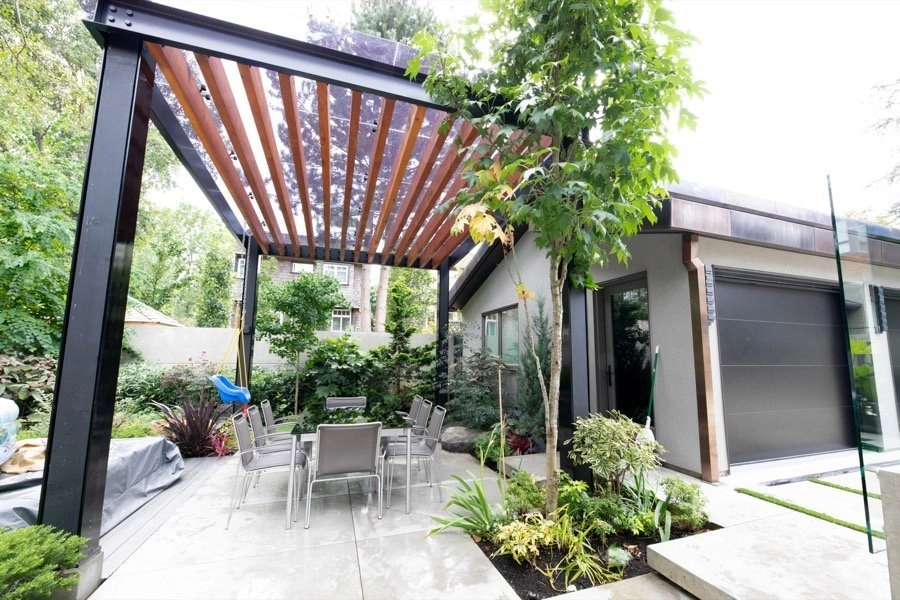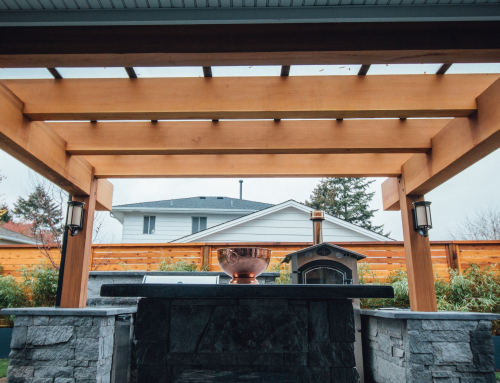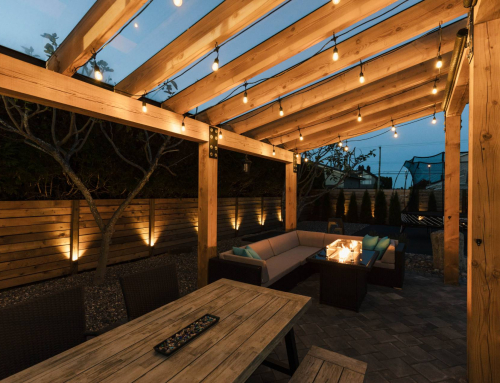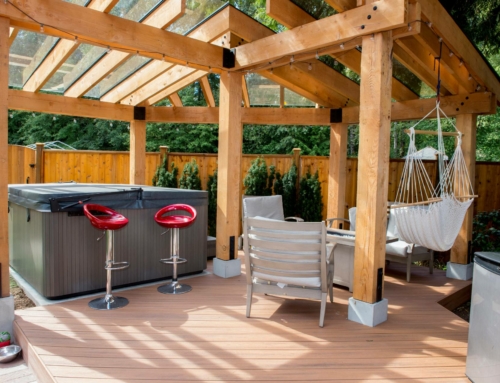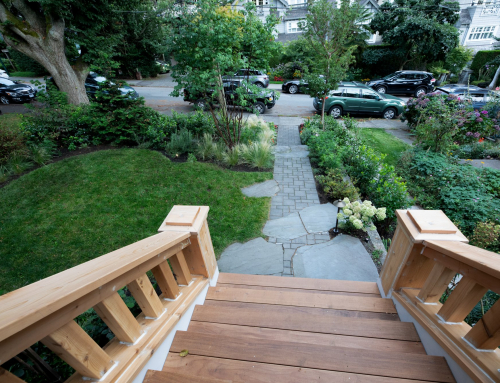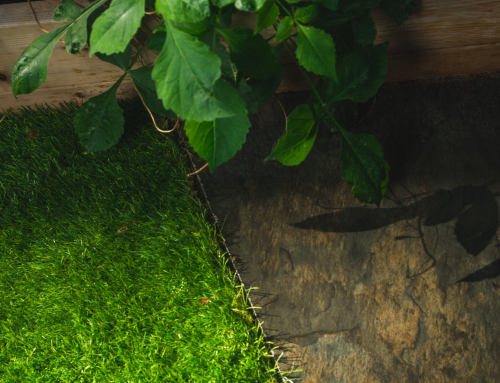When you look at the top 10 Landscape Design trends, every decade has its own style, rooted in the social and economic status of the world.
In the decade of the 1920s, the front yard was classified as a public space, the front-facing image of the family. It was doted on, often surrounded by perennials instead of fences. The aim was to draw more nature to the home.
The suburbs flourished in the 1950s with men returning from the Second World War. The homing industry boomed in this decade with properties becoming increasingly smaller, offering less space for elaborate landscaping. This ushered in the era of what is called “modern” landscaping – a style much toned down from the previous decades.
While the 1960s may conjure an image of free love, in terms of design, it was also known as the decade that focused on elevating the family experience. This was the era of barbeques and picnics. With new irrigation technologies, having the perfect green lawn was all the rage. It symbolized the American dream and was a reflection of wealth. This was also the decade in which golf courses became pristine and expansive, another symbol of prosperity. The landscaping industries started to bloom with this focus on lawn maintenance.
The 1970s saw a new period of industrialization. In the landscape industry the leaf blower was invented, bringing a new type of service to consumers. This decade also saw a certain nostalgia to get back to nature. Homeowners became obsessed with herb and vegetable gardening, forcing the landscaping industry to adapt to a new gardening skillset.
Computer technology began to grow in the 1980s. This changed how the landscaping industry developed and designed projects. Designers began to use computer-based designs, laying the base for more elevated software in the new century.
In the 1990s, Home Depot (and similar retailers) almost pushed the landscaping industry out of business. The early 1990s were a very popular time for “Do it Yourself” projects. But, by the mid-1990s, this trend thankfully fizzled out, as people realized the amount of personal time it cost to take on large projects. This decade saw an upswing in the annual income of North American households. With more money and less time, the landscaping industry came back with a fury. With home improvement shows becoming popular on television, people started to take their landscaping needs much more seriously.
The early 2000s saw the environmentalist mentally boom on a larger scale. The rise of organic produce and gardening skyrocketed and is here to stay. Composting, xeriscapes, and smaller outdoor spaces have been enormous in the last twenty years. With the widespread use of the Internet, people have begun sharing ideas for micro landscapes across the globe, creating fusion and new landscaping designs.
On a broad spectrum, the next decade will see a much greater demand for eco-friendly landscaping that is conscious of the types of materials used. With the urban jungle ever-expanding, green spaces will become more and more coveted.
In terms of specific trends, these are the top ten Landscape Design trends to keep an eye out for in the year 2020.
1) Low Maintenance Lawn Care
The manicured green lawn is still a desired symbol of a healthy household. It enriches the beauty of the property. Consumers still want that crisp green lawn as part of their outdoor oasis. Low maintenance turf is going to be in demand for two simple reasons. Firstly, customers don’t want to spend their limited free time tending to a high maintenance lawn. They want to reserve this time for entertainment, socializing, and relaxing. Secondly, water usage is of great concern in this new decade and a low maintenance lawn should require less hydration.
There are a couple of options for consumers. Artificial grass can actually be quite soft and realistic. Although often more expensive to install than natural grass, the annual savings are much higher as no water or fertilizer needs to be used. Mowing or weeding is not required. Most artificial grass can last fifteen years or even longer.
For those who are not ready to get rid of their natural lawns but want to be more environmentally sensitive, they can use drought-tolerant grass alternatives such as micro clover, ryegrasses, and white clover. These water-friendly options can replace an entire lawn or can be sown in with regular grass to help reduce the hydration needs of the ground.
Xeriscaping is another option for those in need of a low maintenance lawn. This is a landscaping style that is designed for water conversation and for aesthetic. It uses native plants that do well in a dry and arid climate.
2) Bringing the Indoors Outside
A survey created by Adbri Masonry found that close to 42 percent of people use their backyards for entertaining. Outdoor rooms are going to be a huge trend in this new decade.
This will range from using throw pillows, cushioned chairs, and sofas in outdoor seating to the creation of multifunctional patios. Patios can serve as a comfortable retreat, a dining area, a kitchen, and the most aesthetically pleasing place to entertain.
Outdoor kitchens will evolve beyond the family grill. Permanent elements, from sinks to countertops, to storage will be incorporated into the backyard.
Pergolas will also continue to grow in popularity in 2020. Pergolas are outdoor garden structures that form shaded walkways, passageway, or seating area of vertical posts. This is a beautiful place to hang vines and other dangling plants. Functionally, it’s a great area for when you need to retreat from the sun.
Investing in your outdoor living space guarantees that you’ll spend more time in nature, which is therapeutic and good for your health.
3) Organic and Regenerative Gardening
Sustainable, organic gardening is not only a trend but also a global movement in this ever-daunting battle against climate change. This decade will see a rise in conscious decision-making and reduce-reuse-recycle power.
Aside from the obvious health benefits of growing and eating organic food, organic gardening has many other plus sides for the environment. Organic soil helps nurture companion plants and the animals and insects that come in contact with it.
As a society, we must embrace natural gardening. Erosion and deforestation have already washed off one-third of the world’s topsoil. According to the United Nations Food & Agricultural Organization, if this pattern continues, the soil could be completely gone by 2050. Regenerative gardening, also known as composting is essential. By adding organic compost to the soil, we can help to rebuild soil organic matter, restore degraded soil, and reduce runoff. Compost can include food, grass clippings, shredded leaves, straw, and manure.
4) Rooftop/Balcony Gardens
Outdoor living is not just for the traditional homeowner anymore and will definitely be one of the top 10 Landscape Design trends for 2020. With the urban sprawl happening across all major cities, more and more people are moving into condominiums and apartments, but they still want to be in touch with the great outdoors, making their balconies or rooftop patios the most viable places.
Property owners should look into upgrading their rooftop patios, as these are extremely popular places for their tenants to be able to entertain. Landscape designer Adam Robinson says that a great way to establish a rooftop entertaining area is “paving on top of specialty pedestals, or paving jacks. These pods sit atop of the waterproof membrane on the roof and then the pavers simply sit on the pods. They are not glued or concreted into the roof meaning services can be run under the pavement and access is a breeze, simply pick up pavers, conduct maintenance and then place the same paver back on the same pod.”
Balcony outdoor living is incredibly important for those residing in the city. Balcony gardens provide their owners with a touch of nature and can help maintain a healthy green diet.
5) Vertical Gardening
This is going to be one of the most valuable top 10 Landscape Design trends in 2020, especially amongst those living in small homes or apartments. It is a wonderful way to use space efficiently. A vertical garden is a garden that grows upward using a trellis or a similar support system. They can be used to grow plants, vegetables, and flowers. Cucumber, squash, and tomatoes (amongst many others) grow well vertically. Not to mention, harvesting crops is much easier standing.
For those in larger spaces, a vertical garden can be a wonderful accent fence, creating a screen between different areas. They can also be used to hide walls or areas that are not the most aesthetically pleasing. A vertical plant wall can successfully add a unique accent piece to your outdoor set-up.
While there are many DIY methods for a vertical garden, it is best to work with a landscaper in building this so that it’s structurally secure. Many underestimate the weight and power of plant growth and a professional should advise on the best approach.
6) Companion Planting
Companion planting has been popular for a few decades now but will grow even more with small-space gardening as one of the top 10 Landscape Design trends for 2020. Companion planting is the planting of different species in close proximity. Depending on the combination of crops, this can be very healthy for a garden for many reasons.
Firstly, it can increase crop productivity by maximizing the richness of the nutrients in the soil. It can reduce pests, prevent weeds, and attract pollinators to the area. Tall plants can provide natural trellising for a climbing companion, as well as shade regulation for plants that need less sunlight. If planted strategically, companion plants can thrive much more as a collective.
7) Wildlife Enhancement
A healthy garden can attract and welcome wildlife into it. Birdbaths can bring the skies down to the backyard. Birdfeeders can do the same in an apartment setting.
With a collective shift towards becoming in touch with wildlife, butterfly gardens are also seeing a rise in popularity. Butterflies are fabulous pollinators. Replacing the lawn with nectar-rich plants will surely attract fliers-by. Mineral sources are also necessary to incite these beauties. This can be done by placing a shallow dish with rocks covered halfway in water, becoming a butterfly puddling site. Again, this is a great project to consult with a landscaper on, as they can provide information on the types of plants that might attract butterflies in the region.
Bumble Bees are also wonderful visitors to an outdoor space, as they are very powerful pollinators. Flowering fruits and vegetables attract bees. Most importantly, stop using pesticides and there will be an uptake in wildlife.
8) Minimalist Lighting
Linear, sharp, and minimalist lighting will definitely be one of the top 10 Landscape Design trends in 2020. Lighting fixtures themselves will be well hidden while creating a lighting projection that illuminates the area that needs to be presented. Think LED light channels under walkways and stairs or lights placed under landscape structures like benches and bridges.
As part of bringing the “inside” outside, warm LEDs and low voltage lighting will be popular, as well as outdoor chandeliers for the seating and/or dining area. These installations will make the outdoor home feel cozy and safe, as they increase visibility.
9) Outdoor Heating
A fire pit can be used year-round in the family home. Not only does it create a beautiful ambiance and a cozy appeal, but this is also a focal center for entertaining. People are naturally drawn to campfires.
Fire pits might not be practical for all property owners but for those looking to add warmth to their back yard, patio heaters are a popular option that can be installed in the yard.
10) Darker Colour Palettes
Every outdoor space could use a repaint after a few years. Months of weather wearing and natural “wear and tear” can leave the exterior colours looking dull. Repainting something as small as the fence or as large as the exterior of the home can give it a brand new life. In 2020, darker colour palettes will be in trend. Painting the fence with a dark colour can give the illusion of more space. With the consultation of a professional, the right colours can be selected for the home and can even make the space look larger, or at the very least compliment the outdoor environment that’s been built.
Hyland Landscapes, which services the Greater Vancouver Area and beyond, is well equipped to execute the new top 10 Landscape Design trends of the decade.

